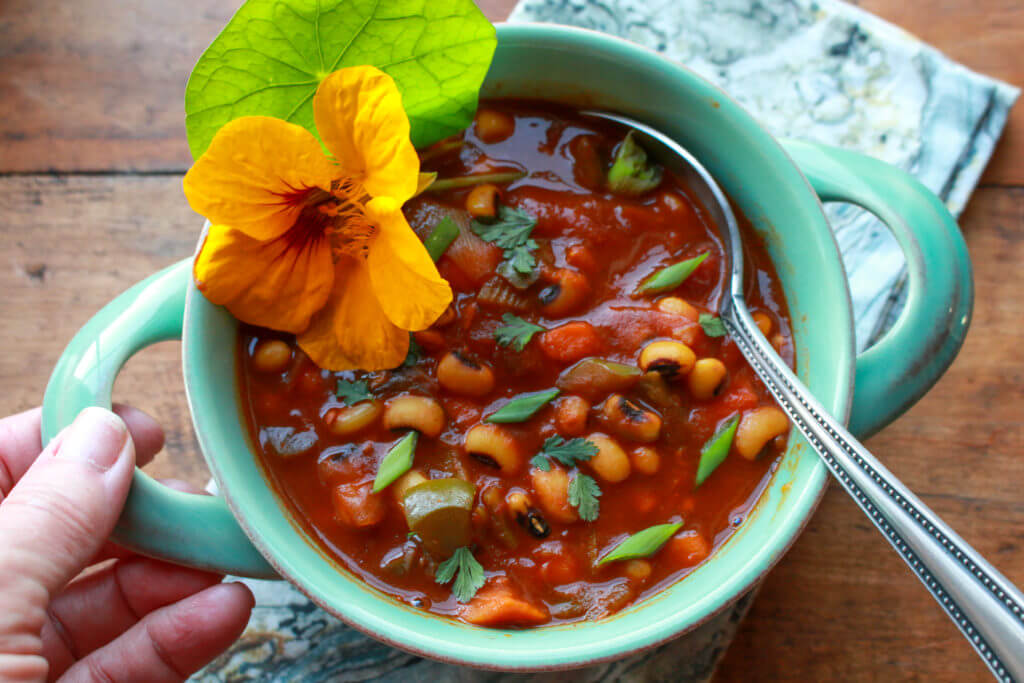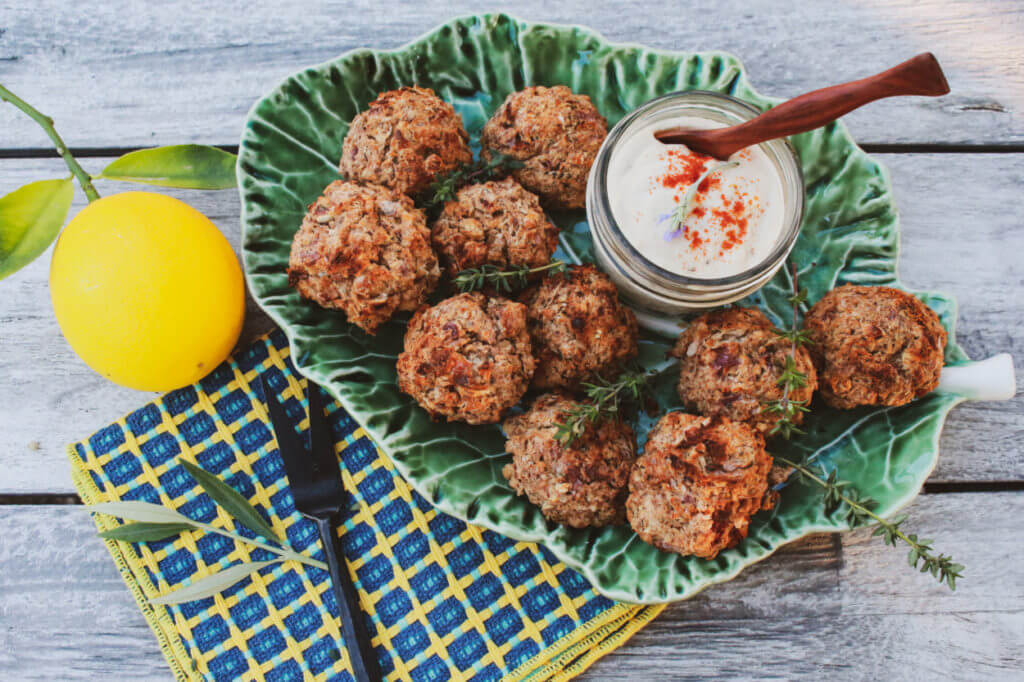Top 5 Ways to Use Black-Eyed Peas

Learn about the health benefits of black-eyed peas, and how you can use them in the kitchen.
Black-eyed peas aren’t just a feel-good pop music band, they are a member of the pea (Fabaceae) family that can help make your body feel good in many ways! These are part of the pulse or legume food group, and are packed with nutrition. One-half cup contains 14% DV (Daily Value) of satiating protein, nearly 25% DV of fiber to help maintain a healthy weight, and nearly 50% DV of the B vitamin folate.
Black-eyed peas, which originated in Africa thousands of years ago, grow in long green pods and are shelled before eating, just like their cousins, green peas. This legume is a staple in soul food cuisine and Southern dishes like Hoppin’ John with Okra. It’s also served on New Year’s Day with collard or mustard greens, which is thought to bring good luck for the new year. Eating legumes is recommended in the 2015-2020 Dietary Guidelines as part of an eating plan that promotes good health and disease prevention (Nutrients, 2016). The high fiber in black-eyed peas serves as a prebiotic for your gut, promoting beneficial bacteria to thrive; thus boosting the gut microbiome. Evidence shows that replacing several meat-based meals a week with legumes can have long-term benefits on longevity, diabetes, cardiovascular disease, and weight management, which may be due to the positive effects of legumes on the gut microbiome.

Most of the time, you’ll find them dried when you purchase them. Before cooking, soak them in water overnight, or try the quick soak method: cover with water, boil for two minutes, and soak for one hour. Then drain off the soaking water and cook them in fresh water until tender. These legumes are an excellent bean substitute in side-dishes, like mixed with brown rice, or tossed into a salad with tomatoes, red onion, and vinaigrette.
Here are my Top 5 Ways to Use Black-Eyed Peas:

1. Add Some “Meaty” Taste. Black-eyed peas add a rich, “meaty” flavor to any plant-based dish, so they are versatile in a number of recipes, especially for plant-based newcomers. Their richness can be enjoyed in this Black-Eyed Pea Sweet Potato Chili as a perfect quick and healthy lunch on a cool day!

2. Whip Them Up in an Instant! Use an Instant Pot to cook up black-eyed peas in a jiffy. This recipe for Instant Pot Black-Eyed Peas and Greens takes just 40 minutes to prepare, no soaking required. Filled with veggies and tasty Southern seasoning, this classic recipe is great for a hearty, one-dish lunch or dinner packed with beneficial phytochemicals and gut-healthy fiber to boot. Southern comfort!

3. Toss Them into a Salad. Switch up your salad and add some depth to those leafy greens. Black-eyed peas enhance the flavors of any simple salad, and add needed protein and fiber to keep you full well into dinner time. This Black-Eyed Pea and Ancient Grain Frisee Salad is a feast for the eyes, and the tummy!

4. Mash them Up. Add mashed black-eyed peas to veggie burgers, veggie patties, nut loaves, and veggie balls, such as this recipe for Greek Veggie Balls. They offer a healthy, earthy flavor and creamy texture to savory, protein-filled meals. You can even make hummus with black-eyed peas by swapping out the chickpeas for cooked or canned black-eyed peas.

5. Dip Away! I just love tucking them into my favorite dips and accompaniments. This recipe for Mississippi Caviar is a healthy riff on my mom’s recipe from years ago. The blend of black-eyed peas with black beans, corn, tomatoes, onion, and peppers can’t be beat. Serve it as a dip with baked whole grain corn chips or alongside tacos, quesadillas, or my potato casserole or veggie balls.
Written by Sharon Palmer, MSFS, RDN with Brooke Ellis, dietetic intern.
Images by Sharon Palmer
For other guides on how to use plants, check out the following:
Top 5 Ways to Use Mulberries
Top 5 Ways to Use Peas
Top 5 Ways to Use Kohlrabi
Top 5 Ways to Use Chia Seeds


